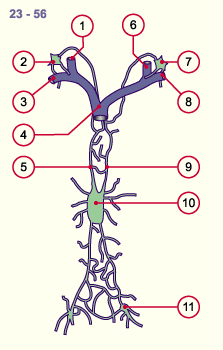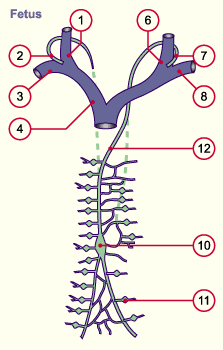
1
2
3
4
5
6
|
Right jugular vein
Right jugular and
axillary lymph duct
Right subclavian vein
Superior cava vein
Right thoracic duct
Left jugular vein |
|
|
|

7
8
9
10
11
12 |
Left jugular and
axillary lymph duct
Left subclavian vein
Left thoracic duct
Cysterna chyli
Inguinal lymph nodes
Definitive thoracic duct |
|
|
|
Fig. 13
The most important lymph vessels arise bilaterally and form a fine net.
Fig. 14
Just as with the venous system the lymph vessels also atrophy unilaterally again.
In the breast-
abdominal space there remains only a thoracic duct at the junction of the jugular and subclavian veins that drains the lymph of the entire lower bodily region and the left head and arm region into the venous system. A smaller part, the lymph of the right-hand head-arm region, empties between the right jugular and subclavian veins into the venous system. The dashed lines indicate the atrophied parts of the lymph vessel system.
|

